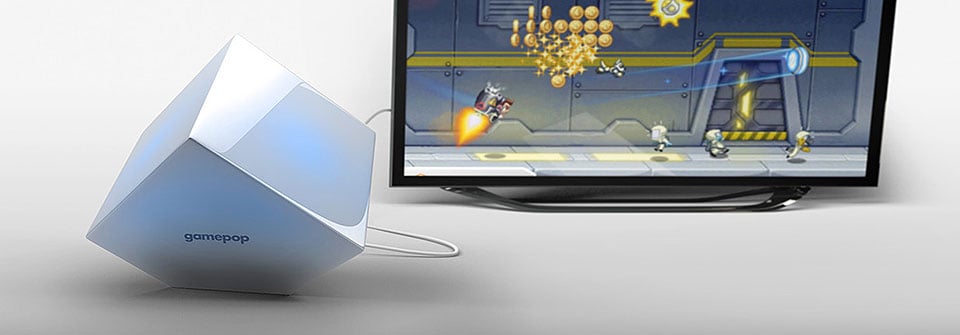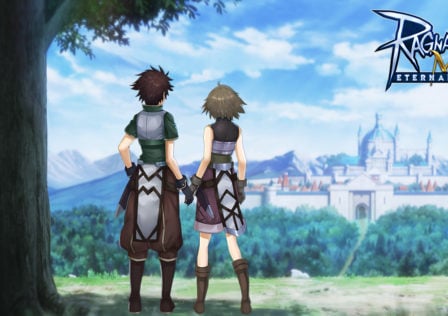Recently BlueStacks, a company best known for their software which allows select Android apps to run on PCs and Macs, announced their latest product, the GamePop. For those of you unfamiliar with GamePop, this is a home gaming console running Android to play Android games on but features a subscription-based business model where players can access all the games in full for a monthly fee.
The GamePop is Bluestack’s interpretation of an Android-based micro-console, not unlike the OUYA or GameStick. The recent slew of ancillary Android consoles is a competitive, interesting space, so we talked to John Gargiulo, Head of Marketing and Business Development for BlueStacks, which in John’s words “means getting developers to join the platform.” – just to clear things up.
“GamePop runs Android Jelly Bean 4.2,” Gargiulo told DroidGamers, “but it is our own UI and heavily layered with our IP and of course our content partners. We have been fortunate to have many Google ‘Top Developers’ come on board from Halfbrick to Glu to Deemedya and many more. We have an awesome relationship with Google and are working with them now to get GamePop certified.”
DroidGamers: First, I would like to ask about the GamePop itself. A games console from an established young company like Bluestacks is definitely interesting.
Releasing another micro-console that runs Android games is seen as something of a trend now. It was started by the OUYA, then GreenThrottle and the Gamestick followed after – enter GamePop. All of these devices have a similar end-goal of playing smaller, mobile games on the television. Their success relies heavily on developer support and consumer interest (similar boxes, eSfere and EVO 2 have failed for a lack of both). What makes the GamePop more enticing for both players and developers over, say, the OUYA or GameStick?
Gargiulo: When we talk with developers, one thing everyone seems to agree on is that these awesome games will not stay locked up on 4-inch screens for much longer. The pixel density is higher on a phone than it is on a 60″ flatscreen TV, so the apps look beautiful. We have had a lot of kids in our office for UX testing lately, and when they play a Glu game on the TV they have no idea it is not a console game, nor do they care. A 34 year-old hardcore gamer who is actively awaiting GTA5 is not our audience. The girl who didn’t want to leave our office yesterday playing Subway Surfers on our TV is.
The fact that there are others getting into the space and that there is such a frenzy of interest from users is a great sign of course. Our bet is that the Mobile Generation doesn’t want to continue with the older-school, ‘Pay us a chunk of money for a console than another chunk every time you want a game’ model. There are a lot of companies full of people coming out of the console space who are betting on this. We come from mobile. Most kids have over 40 games at any one time on their phone. We believe the all-you-can-eat “Netflix for Games” model will be more attractive.
DroidGamers: That’s a very interesting demographic to focus on. I have a 4 1/2 year-old nephew who is certainly part of the Mobile Generation. He plays simple games like Angry Birds and Grumpy Bears on his Kindle Fire. The design of those games and how you interact with them is very intuitive, but it is a completely different use paradigm from playing a game feet away from a television with a controller in-hand. From what I’ve observed, tablets like the Kindle Fire and iPad are so popular with children because the majority of interactions with software – games in this case – are so encapsulated (if that makes sense).
The 34 year-old “core” gamer is much more comfortable with a controller because the layout is familiar, and the game’s controls wrap around that very tactile experience.
The Mobile Generation of kids as grown up with touch screens, and accept that any game could be played multiple ways – tapping, swiping, tilting – but all of those happen within the bezel of the phone/tablet that they’re using.
Are you worried that by diverting their attention in two places – holding the phone/controller in their hands, while watching their actions play out on an entirely different screen – will complicate those interactions, or at least partially dilute the intuitiveness of the contained experience that playing with a very specific, 4-to-10 inch screen can provide? – especially without the natural tactile boundaries that a physical controller does.
Gargiulo: One thing we’ve learned with kids 8-15 is how intuitively they pick up any control scheme. We realized that everyone already has a controller in their pocket, with their Android or iPhone. With a game like Doodle Grub for example, which solely uses the accelerometer in the phone, kids pick it up instantly because the feedback itself is instant. Before they even know how the game is played, they can feel that tilting the phone or controller to the left moves the doodle grub left. They forget about the controls entirely and are engrossed in what’s happening onscreen.
When some people think about the mobile experience on TV they think of something like Apple TV or Miracast where the fact that the game is showing on a TV is almost incidental. GamePop is not those. We’re building a true second screen experience that is engineered game by game to work seamlessly with the controls the user holds in their hand.
Thank you John Gargiulo for taking the time to answer these questions. If you’re interested in picking up a GamePop, pre-orders are still live over on GamePop.tv where you can get a free unit if you pay for a year’s subscription upfront.





